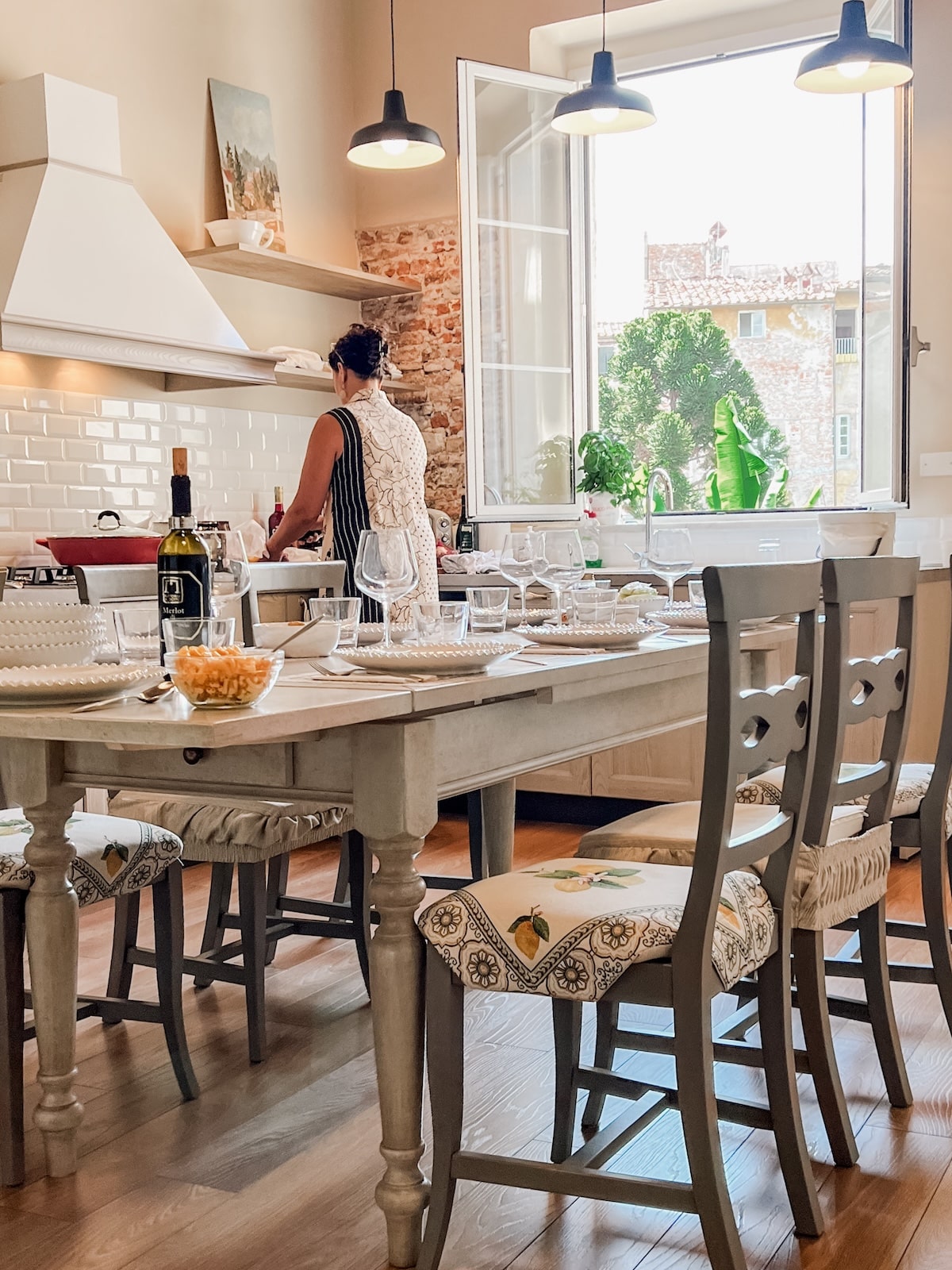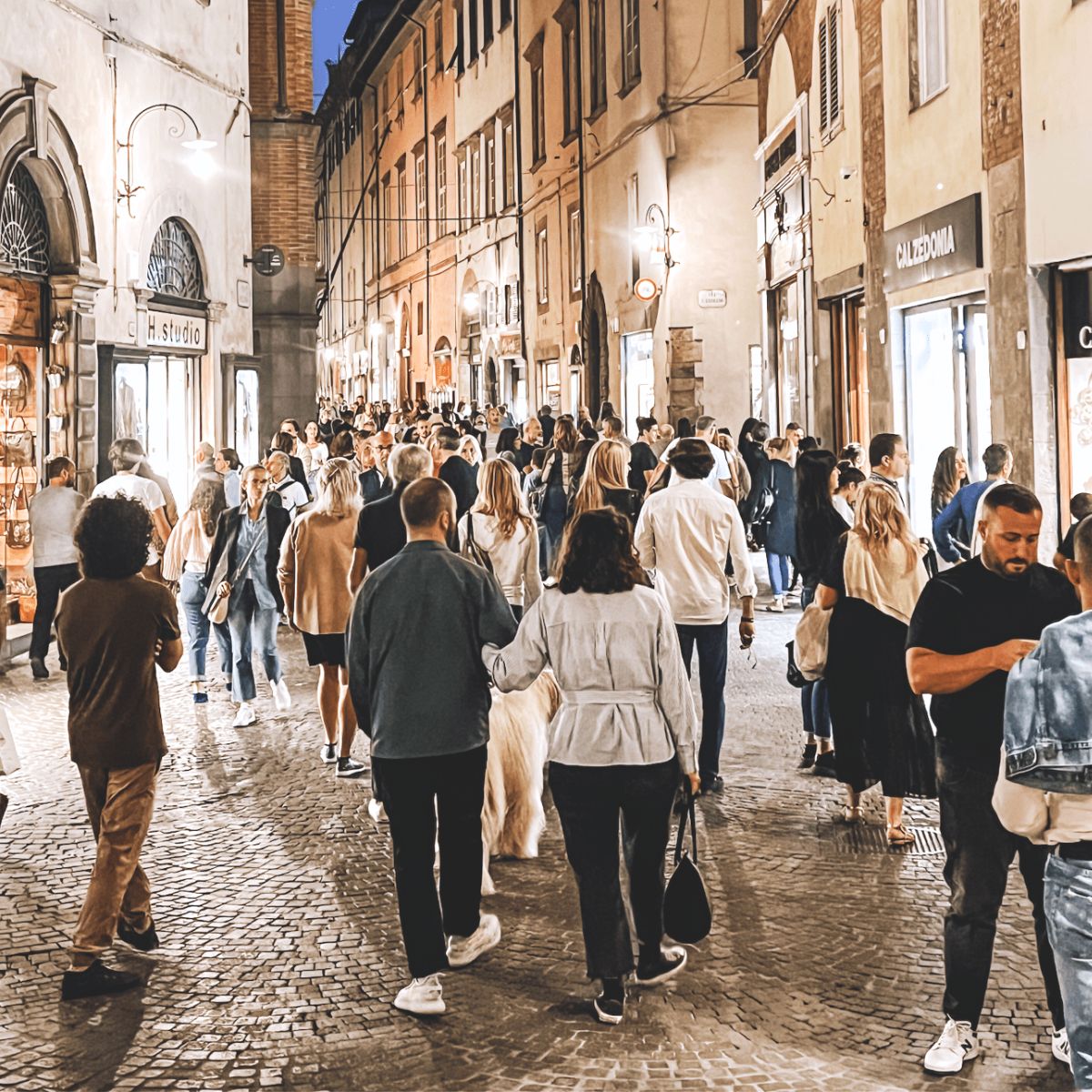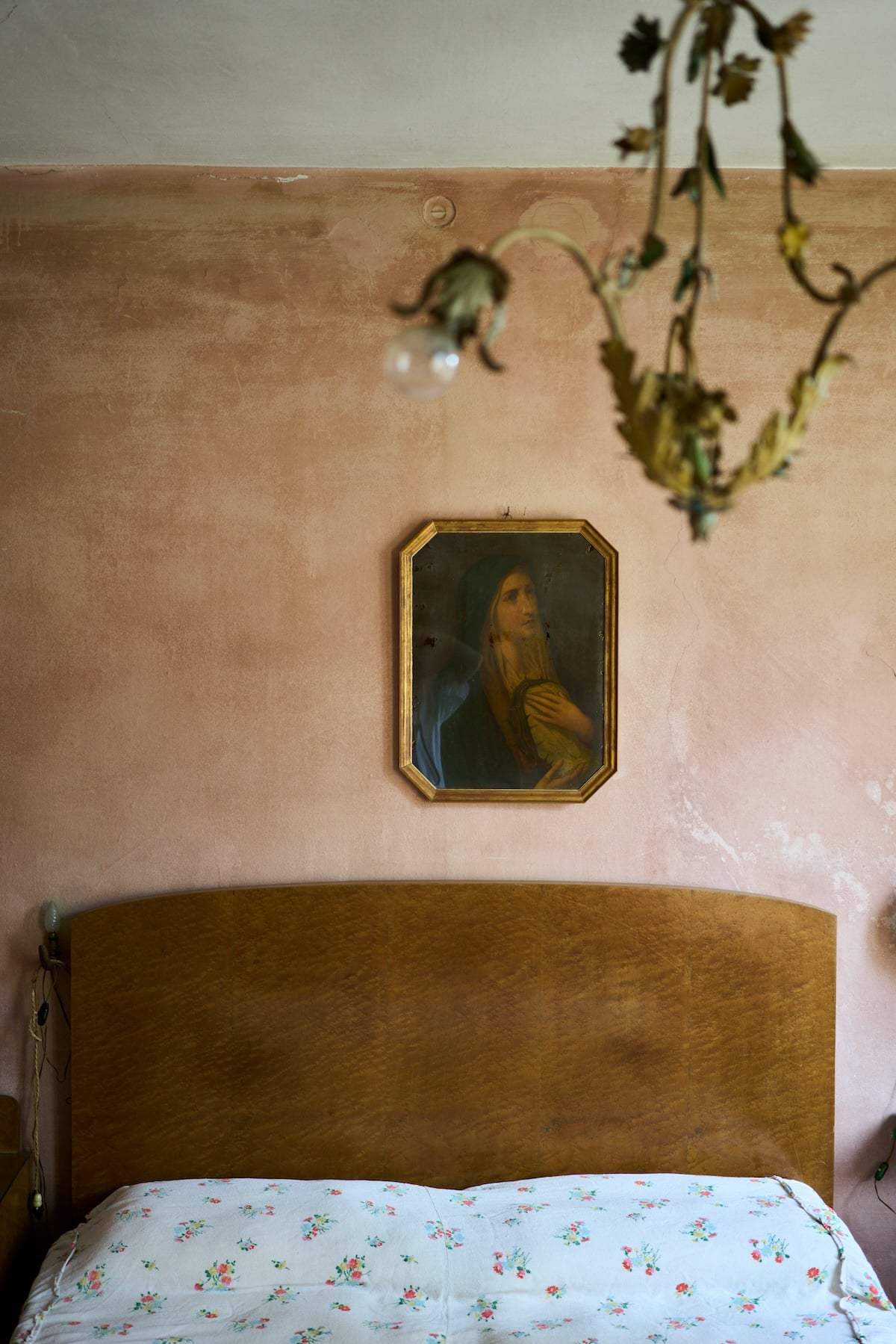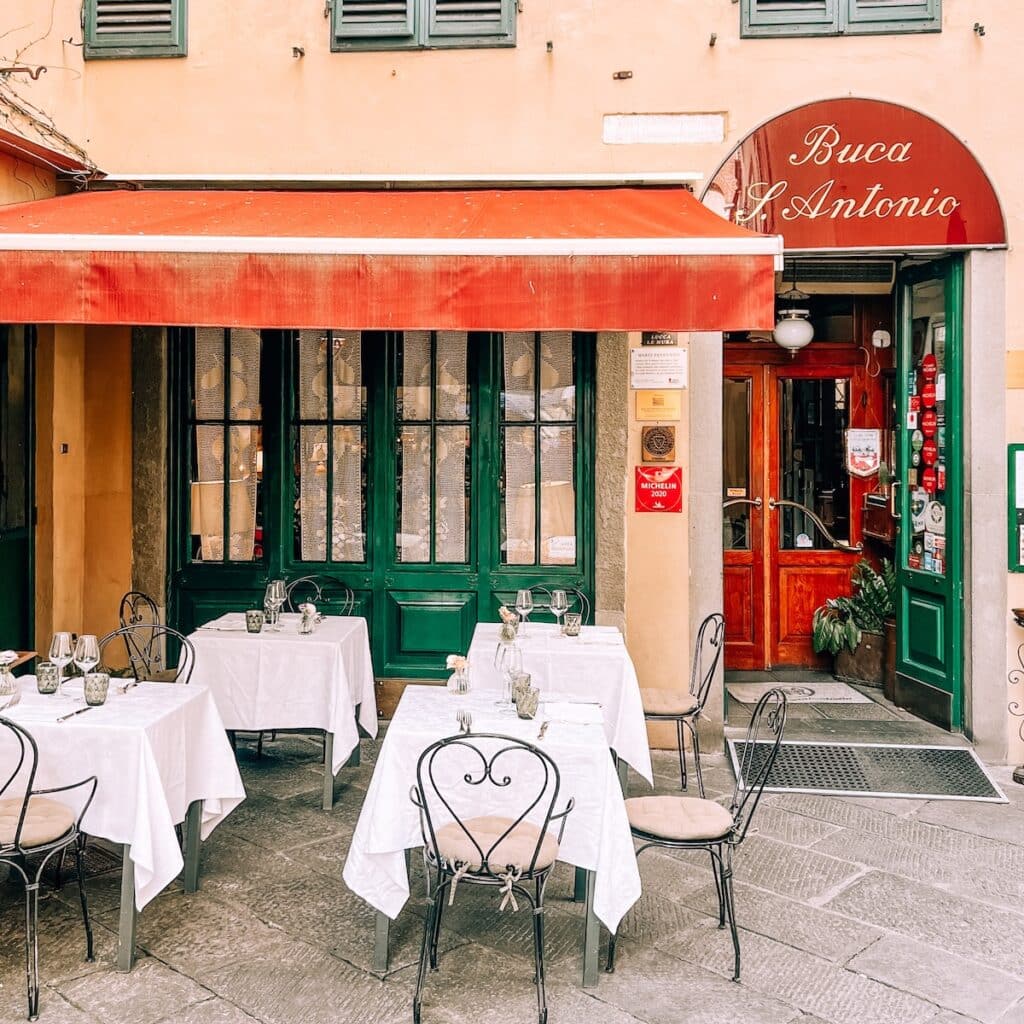
You want to eat well in Italy. And not just eat well—eat authentically.
But what is authentic Italian food, really?
You’ve seen the photos of big bowls of pasta and extra-cheesy dishes made to impress. You might think you know Italian food—but eating it in Italy is a whole different experience.
This guide will help you:
- Know what to eat in Italy by meal and region
- Skip the touristy stuff that’s not worth your euros
- Understand what real Italians actually eat
Italian Food Isn’t What You Think
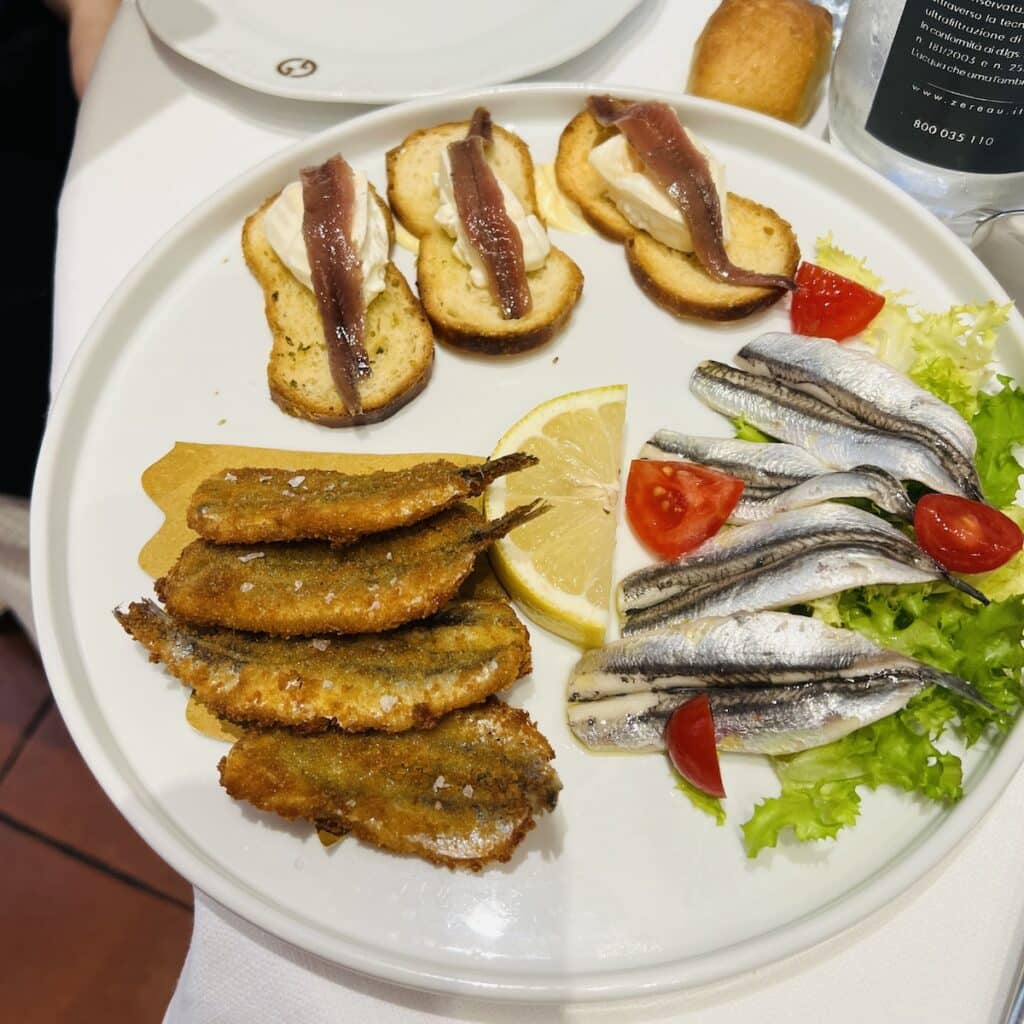
First, let’s clear this up: there is no single “Italian cuisine.”
Italy is regional. Hyper-regional.
Pasta dishes, sauces, breads, and even coffee habits change depending on where you are. What you eat in Sicily is nothing like what you’ll find in Piedmont or Trentino.
Also, here’s what you won’t find in Italy. Foods like:
- Chicken Alfredo
- Spaghetti with meatballs
- Garlic bread
- Pepperoni pizza (unless you mean bell peppers)
Italian food is local, seasonal, and simple. A few ingredients done really well.
–>>Want to go deeper? Read these 64 facts about Italian food.
How Italians Eat: A Quick Crash Course
Meals in Italy follow a rhythm. Here’s the basic structure:
- Colazione (Breakfast): Light, sweet, often just a coffee and pastry
- Pranzo (Lunch): The main meal of the day in many regions
- Cena (Dinner): Usually lighter, eaten later
Each meal can include multiple courses:
- Antipasto: A starter
- Primo: Pasta, risotto, or soup
- Secondo: Meat or fish
- Contorno: Side dish, often vegetables
- Dolce: Dessert
You don’t need to order every course. But now you’ll know what to expect on a menu.
–>>Want more on this? Here’s a breakdown of Italian meal courses.
What to Eat in Italy By Meal
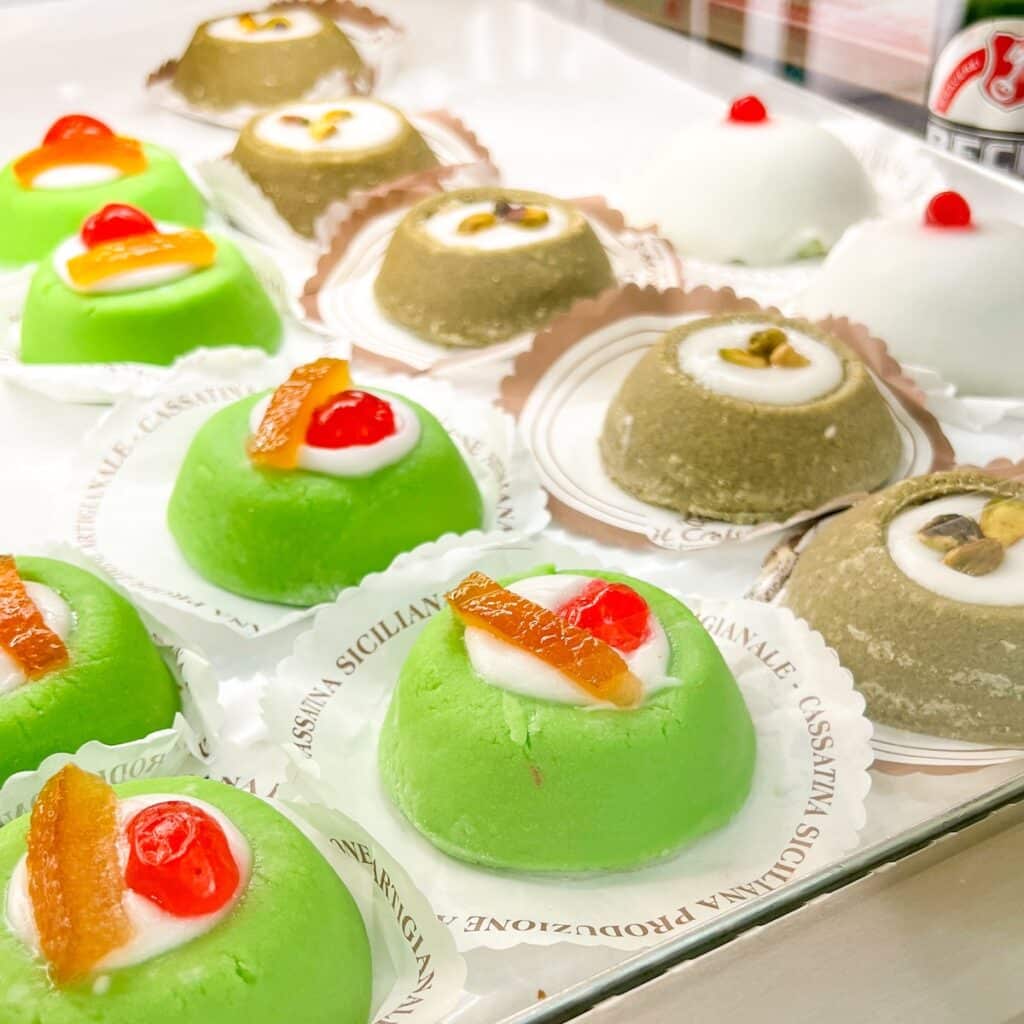
Breakfast
- Expect a cappuccino and a cornetto (Italian croissant)
- In Sicily, try granita with brioche
- Don’t expect eggs, bacon, or pancakes
–>>Read more about what Italians eat for breakfast
Lunch
This is the heart of the food culture in many parts of Italy. Sit-down meals are common, but so are quick panini shops.

Dinner
Often eaten around 8 PM or later.
- Lighter options: Grilled meats, legumes, simple pasta
What Not to Eat in Italy (and How to Spot a Tourist Trap)
Avoid:
- Menus with photos of food
- Restaurants with people outside calling you in
- Spots with long English translations and QR codes but no locals inside
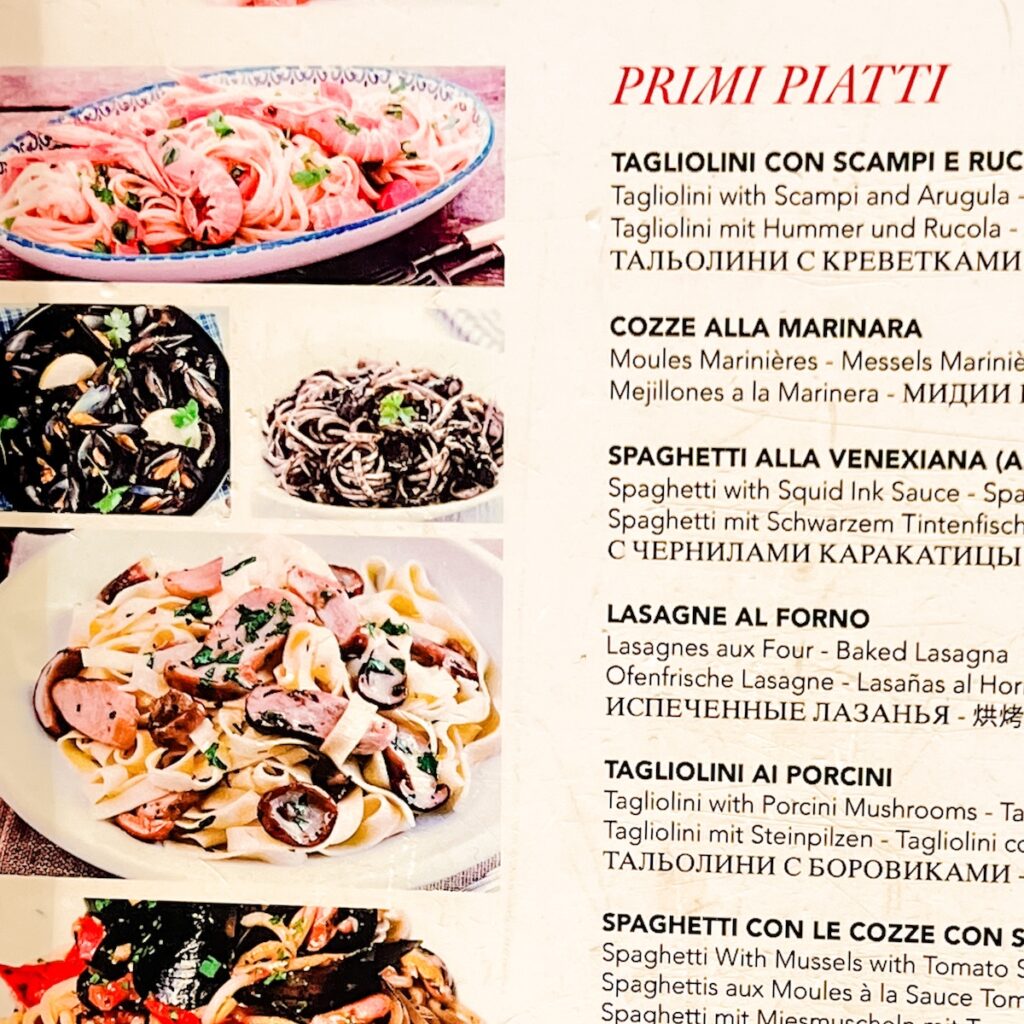
–>>Need more tips? Here are 7 ways to avoid tourist trap restaurants
Also, remember: tipping isn’t expected the way it is in the U.S. A euro or two is fine.
What To Eat In Italy If You’re Vegetarian, Vegan or Gluten Free
Italy is surprisingly accommodating, especially in cities like Rome, Florence, Milan, and Venice where demand for plant-based and gluten-free food has grown rapidly in recent years.
Vegetarian
You’ll find plenty of naturally vegetarian dishes across Italy—like farinata (chickpea flatbread), vegetable risottos, eggplant parmigiana, and gnocchi with tomato sauce. Most trattorias will offer at least one or two vegetarian primi, and antipasti often feature grilled vegetables, cheeses, or legumes.
Menus don’t always mark dishes as vegetarian, so it helps to scan ingredients or ask, “È vegetariano?”
Vegan
Vegan travelers will have more options in larger cities and university towns. Look for restaurants labeled “vegetariano” or “vegano”—many offer full vegan menus or clearly marked plant-based dishes. Traditional Italian meals like pasta with tomato sauce, grilled vegetables, and focaccia can often be enjoyed vegan, especially when you ask to hold the cheese.
Markets and supermarkets also offer more plant-based products than you might expect—including vegan cheese, non-dairy milk, and pre-made meals.
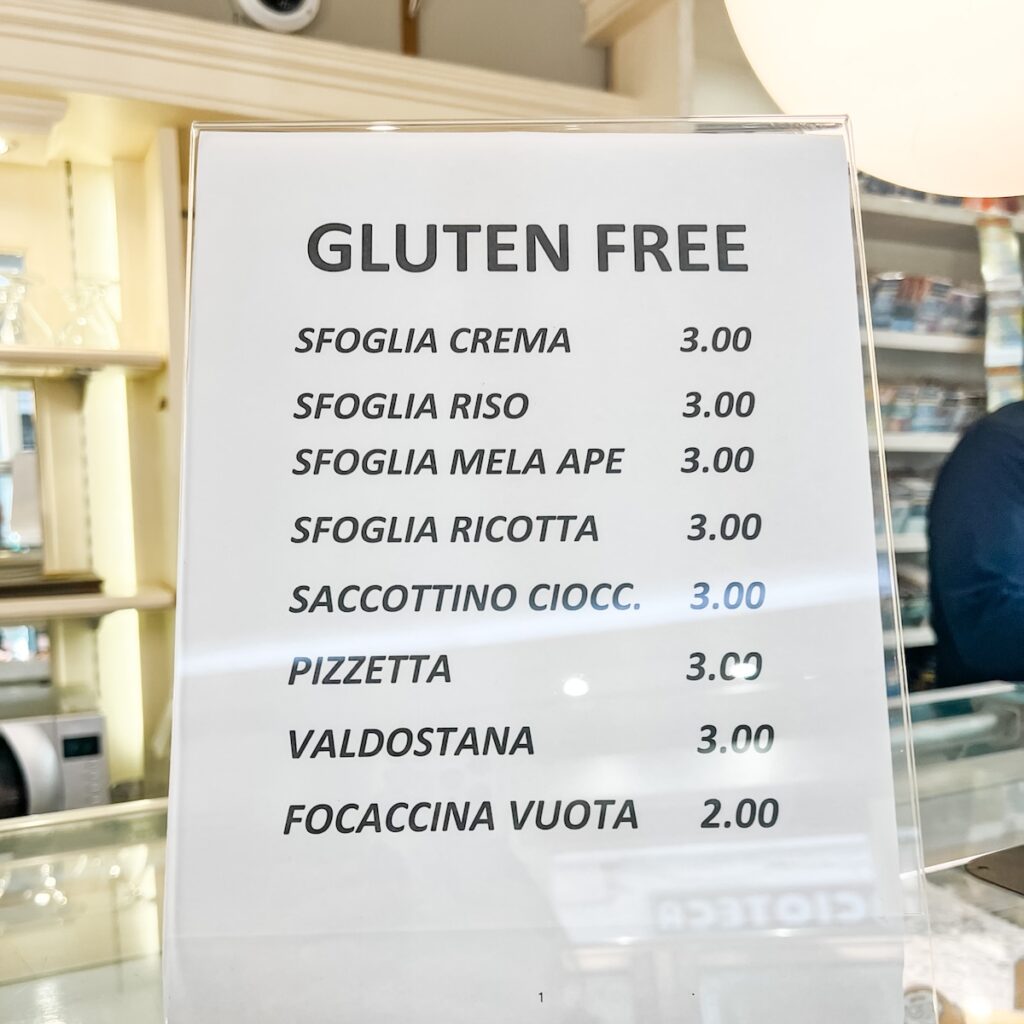
Gluten-Free
Italy is one of the most gluten-free-friendly countries in Europe. Many restaurants (especially in urban areas) are certified by the Italian Celiac Association and take cross-contamination seriously. You’ll often see “senza glutine” printed on menus or signs in restaurant windows.
Naturally gluten-free options include risotto, polenta, grilled meats and vegetables, and many gelato flavors. Supermarkets carry gluten-free pasta, bread, and snacks, and you can often request gluten-free pizza dough or pasta at restaurants.
Even small towns often have at least one certified gluten-free-friendly restaurant or pizzeria, and awareness is generally high—especially compared to other countries.
Regional Food Guide: What to Eat In Italy by Region
Abruzzo
- Arrosticini (grilled lamb skewers)
- Spaghetti alla chitarra (square-cut pasta made with a guitar-like tool)
- Parrozzo (chocolate-covered almond cake)
Basilicata
- Peperoni cruschi (sun-dried and fried sweet peppers)
- Lagane e ceci (wide pasta with chickpeas)
- Strazzata (spiced flatbread)
Calabria
- ‘Nduja (spicy spreadable salami)
- Fileja (hand-rolled pasta)
- Tartufo di Pizzo (gelato truffle with chocolate center)
Campania
- Pizza Margherita (wood-fired pizza with tomato, mozzarella, and basil)
- Spaghetti alle vongole (spaghetti with clams)
- Sfogliatella (layered pastry with ricotta filling)
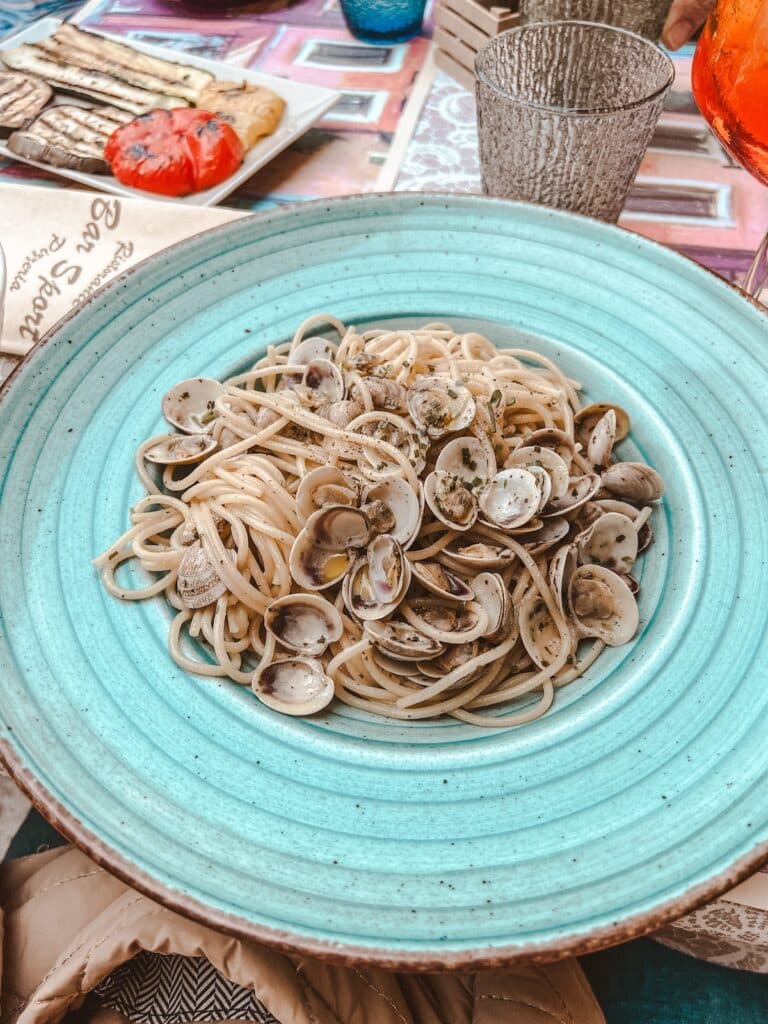
Emilia-Romagna
- Tagliatelle al ragù (fresh pasta with meat sauce)
- Tortellini in brodo (stuffed pasta in broth)
- Zuppa inglese (layered dessert with custard and sponge cake)
Friuli-Venezia Giulia
- Frico (fried cheese and potato pancake)
- Cjarsons (sweet and savory filled pasta)
- Gubana (spiral pastry with nuts and dried fruit)
Lazio
- Cacio e pepe (pasta with cheese and black pepper)
- Saltimbocca alla romana (veal with prosciutto and sage)
- Maritozzo (sweet bun filled with whipped cream)
Liguria
- Trofie al pesto (twisted pasta with basil pesto)
- Focaccia genovese (olive oil flatbread)
- Pandolce (fruit-studded sweet bread)
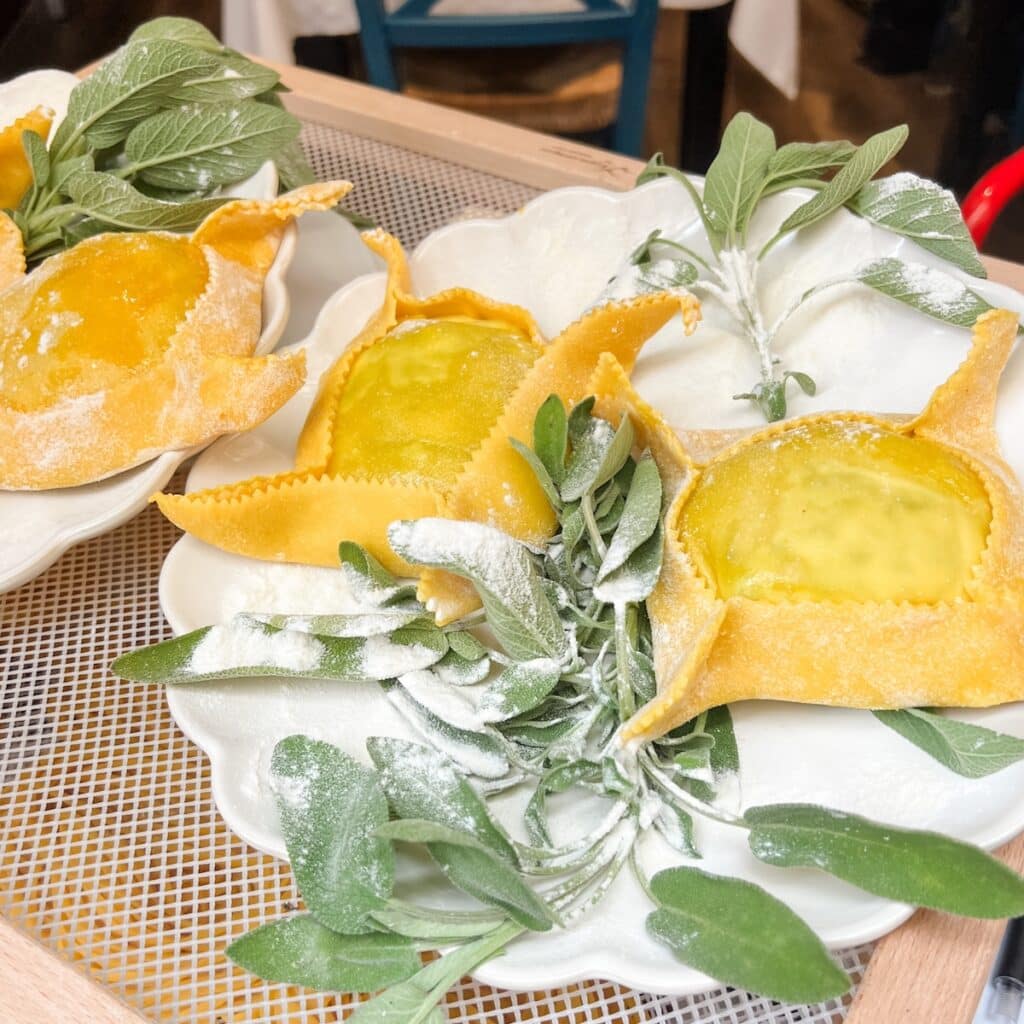
Lombardy
- Risotto alla milanese (saffron risotto)
- Ossobuco (braised veal shank)
- Panettone (Christmas bread with dried fruit)
Marche
- Vincisgrassi (rich baked pasta)
- Olive all’ascolana (fried stuffed olives)
- Cicerchiata (honey-glazed fried dough balls)
Molise
- Cavatelli with pork ragù (shell-shaped pasta with meat sauce)
- Pampanella (spicy pork slices)
- Mostarda di uva (grape and mustard condiment)
Piedmont
- Vitello tonnato (veal with tuna sauce)
- Agnolotti del plin (stuffed pasta pockets)
- Bonet (cocoa and amaretti custard)
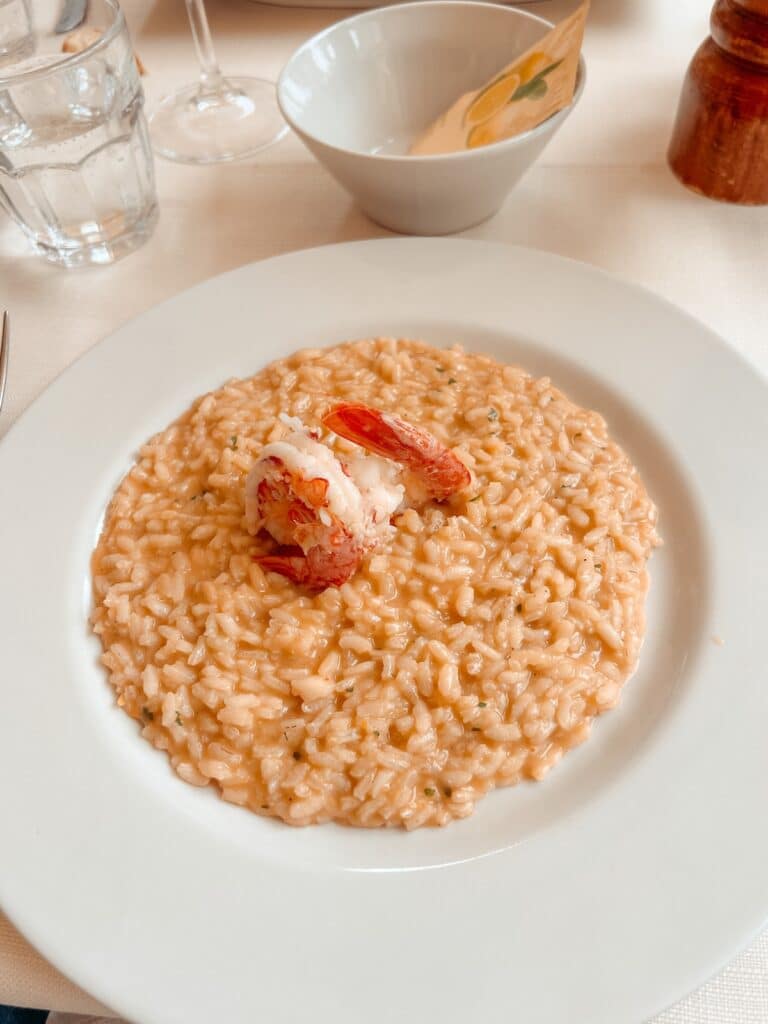
Puglia
- Orecchiette alle cime di rapa (ear-shaped pasta with broccoli rabe)
- Tiella (baked rice with potatoes and mussels)
- Pasticciotto (shortcrust pastry with custard)
Sardinia
- Culurgiones (stuffed pasta with potato, mint, and cheese)
- Porceddu (slow-roasted suckling pig)
- Seadas (fried pastry with cheese and honey)
Sicily
- Arancini (fried rice balls with various fillings)
- Pasta alla Norma (pasta with eggplant, tomato, and ricotta salata)
- Cannoli (crispy shell filled with sweet ricotta)
Trentino-Alto Adige
- Canederli (bread dumplings)
- Speck (smoked cured ham)
- Strudel (apple-filled pastry)
Tuscany
- Ribollita (vegetable and bread soup)
- Pappa al pomodoro (tomato and bread stew)
- Cantucci e Vin Santo (almond cookies with dessert wine)
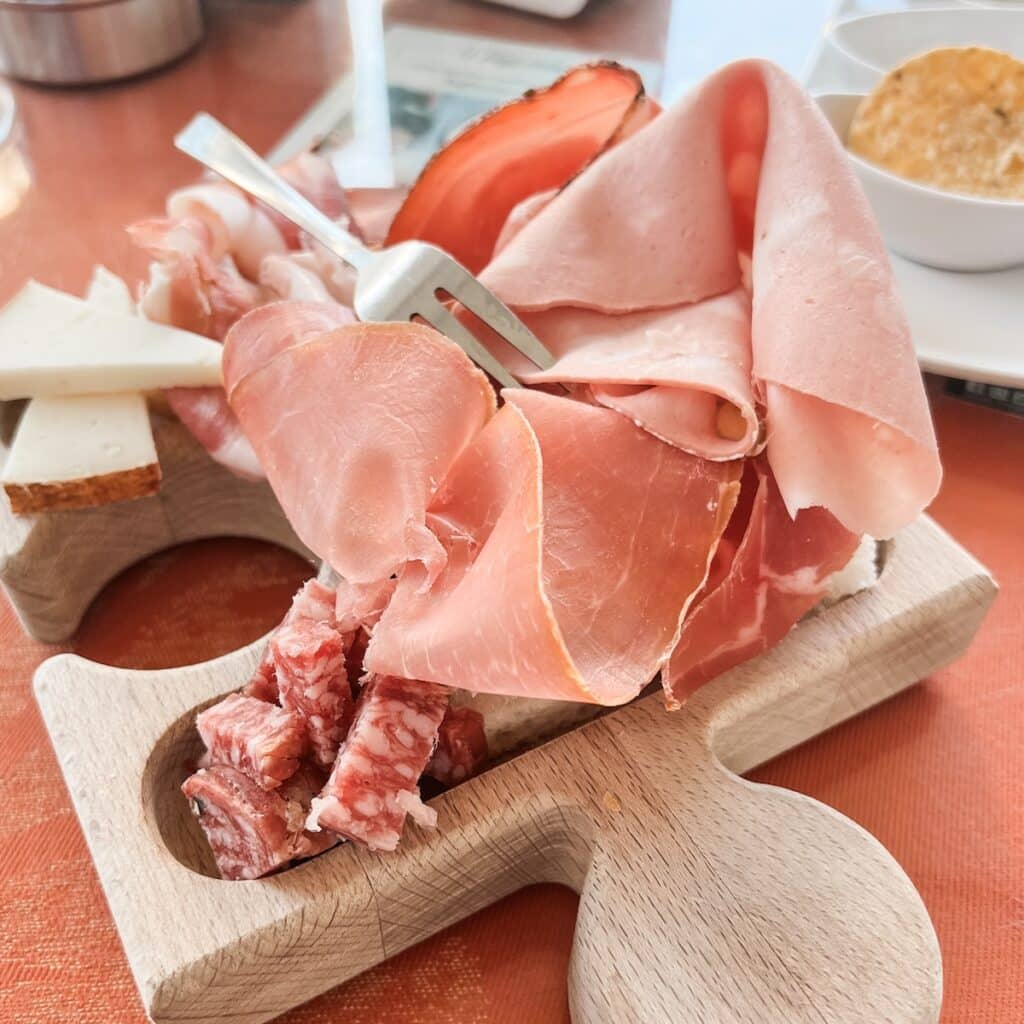
Umbria
- Torta al testo (flatbread sandwich)
- Strangozzi with truffle (handmade pasta with truffle sauce)
- Torcolo di San Costanzo (ring-shaped sweet bread)
Valle d’Aosta
- Fonduta (melted cheese dip)
- Carbonade (beef stewed in red wine)
- Tegole (almond wafer cookies)
Veneto
- Bigoli in salsa (thick spaghetti with anchovy and onion sauce)
- Sarde in saor (sweet and sour sardines)
- Tiramisu (layered dessert with coffee, mascarpone, and cocoa)
Eat Like a Local: Practical Tips

- Ask locals where they eat
- Look for menus handwritten on chalkboards
- Choose trattorias and osterias over touristy ristorantes
- Visit food markets, sagra (local food festivals), and enotecas
Not sure what kind of place you’re walking into? This guide breaks it down.
Want a deeper dive? Book a food tour or cooking class. (Look for small group or private ones for a more local feel.)
Real Food, Real Italy
The best food in Italy often comes from places without a website.
Don’t overplan. Leave room for discoveries.
Be open, be curious, and order what’s local. You might just have the best meal of your trip at a place with no reviews and plastic chairs.
Ready to start planning the real trip? Sign up for my free 9-day email series or check out Italy Unrushed for help creating an authentic itinerary that lets you actually enjoy every bite.
